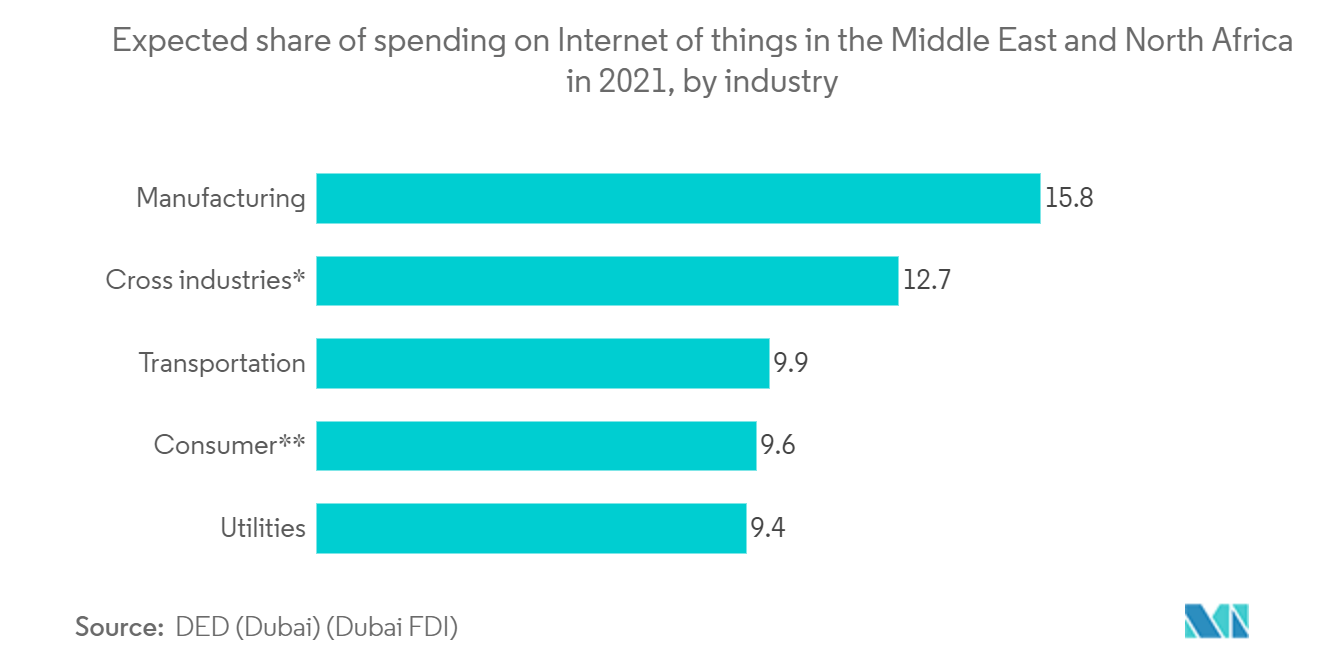Market Trends of MENA Mobile Virtual Network Operator Industry
This section covers the major market trends shaping the MENA Virtual Network Operator Market according to our research experts:
Deployment of 5G Technologies is Expected to Drive the Market
- According to the Ericsson mobility report, the first 5G subscriptions in the Middle East & North Africa are expected during the forecasted period and will reach around 17 million subscriptions this year. Further, the region will witness a nearly five-fold increase in LTE subscriptions, from 190 million to 860 million in the same timeframe.
- Increased 5G penetration will also fuel the Internet of Things, facilitating the digital transformation of industries and providing mobile operators in the region with opportunities to explore new revenue streams. For instance, smart agriculture initiatives in Turkey and Africa, remote monitoring of oil wells and temporary networks in case of disasters in Saudi Arabia, and Narrowband-IoT (NB-IoT) being used to address utilities and smart meters in South Africa. So, technologies like 5G and IoT will serve the region's diverse operator needs by opening new revenue streams as a result of industry digitization, improving standards of livings in countries across MENA.
- Due to an abundance of opportunities in the enterprise sector, most International service providers are planning to launch their services to maximize their profit. For instance, Sparkle, an Italian service provider, has announced opening of a new Point of Presence (PoP) in Morocco. It will be located in Orange Maroc's open data center and provide corporate communication services to multinational enterprises aiming to expand their business in Morocco. It will also offer ethernet and virtual private IP-VPN networks to Italian and European multinationals to enable intracompany communication and connect their headquarters with their branches in Morocco.
- The COVID-19 outbreak will accelerate the demand for agile and flexible work styles and further push the adoption of communication services that enhance work-life balance. However, telecom regulators have postponed their 5G spectrum auction plans amidst the global pandemic.

Emerging Technologies is Expected to Drive the Market
- Digital transformation across the world is expected to increase the adoption of mainly the Internet of Things (IoT) and machine-to-machine (M2M) in Middle Eastern and North African countries. Hence, it is expected that MVNOs will explore opportunities for emerging technologies such as the Internet of Things (IoT), machine-to-machine (M2M), blockchain, 5G, and Artificial Intelligence.
- Three local carriers-stc, Zain Kuwait, and Ooredoo Kuwait-offer mobile telecommunications services in Kuwait. The ICT sector's regulatory body, the Communication and Information Technology Regulatory Authority (CITRA), has plans to make Kuwait's mobile market more competitive and to produce more readily available and price-competitive mobile services.
- According to a recent update to the company's Worldwide Semiannual Internet of Things Spending Guide, as governments and businesses increase their investments in digital transformation initiatives, IoT spending in the MEA region will increase 15.9% year over year in last year and reach $17.63 billion this year. Public and private sectors are also focusing on improving their provision of customer services, improving the quality of products and services that accelerate their time to market, reducing costs, and increasing their profitability which will encourage them to utilize the emerging technologies and is expected to boost the market growth.
- The growth of MVNOs depends on technological advancements. The consumer market and its various niches, such as foreign workers and younger consumers, were the initial market sector examined by this business model. There is increasing potential for MVNOs to position themselves as B2B service providers due to the development of 5G technology and the internet-of-things ecosystem. The MVNOs business model has made it easier to include new businesses into the global telecoms ecosystem. For instance, MVNOs are used by the automotive and freight industries to provide direct-to-consumer communication services, especially outside urban centers that traditional networks do not cover.


